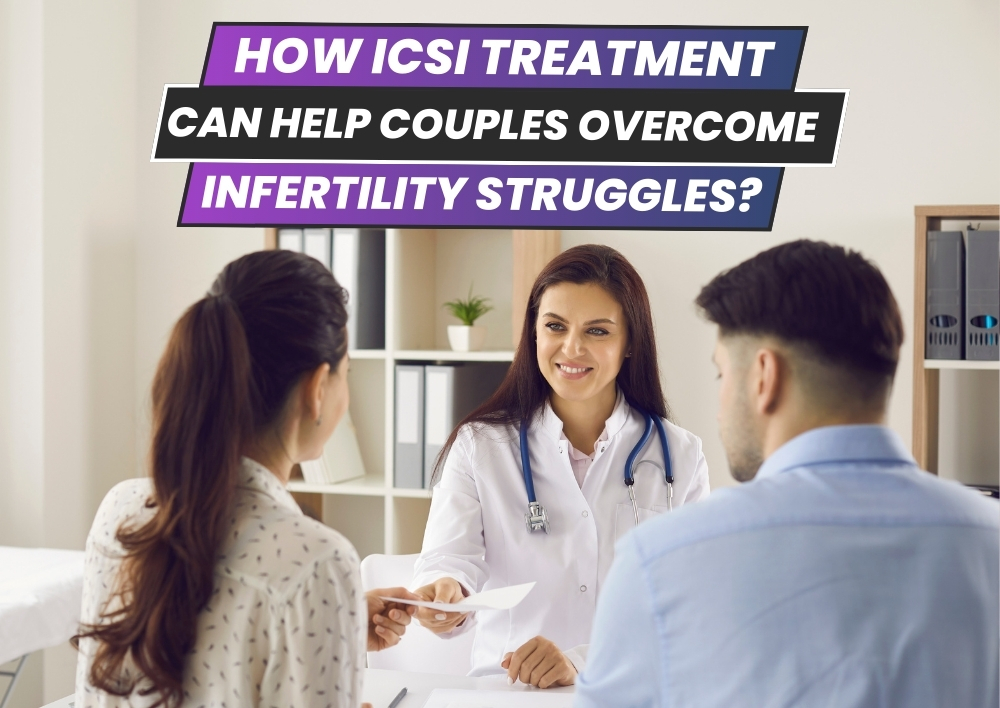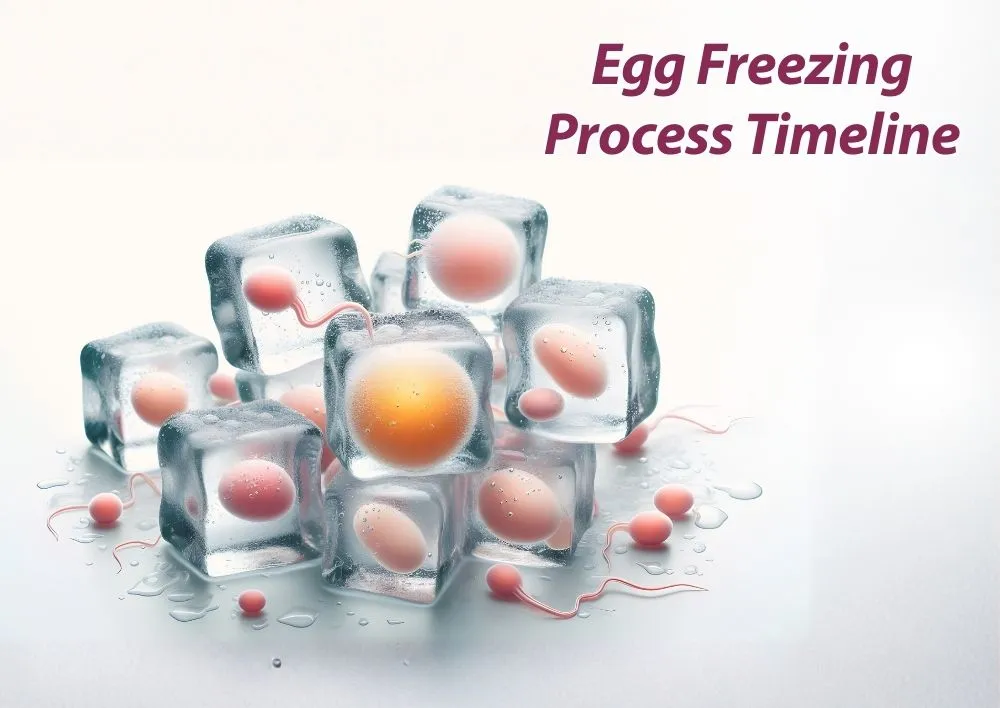How ICSI Treatment Can Help Couples Overcome Infertility Struggles?
Overview
Infertility can be an extremely hard journey for couples who dream of starting a family. As medical science advances, new treatments are continuously being developed to help these couples achieve their dreams. One such revolutionary treatment is Intracytoplasmic Sperm Injection (ICSI). This technique has become a world of hope for many, offering a solution to a variety of infertility issues. In this blog post, we will explore how ICSI treatment works and how it can help couples overcome their infertility struggles.
What is ICSI Treatment for Infertility?
According to Dr. Richa Sharma, the best doctor for ICSI at Miracles Fertility & IVF Clinic Gurgaon, Intracytoplasmic Sperm Injection (ICSI) is a highly specialized technique used in assisted reproductive technology (ART) to treat infertility. It is a form of in vitro fertilization (IVF) that involves the direct injection of a single sperm into an egg to facilitate fertilization.
ICSI is typically recommended for couples who have been unable to conceive due to severe male factor infertility, although it can also be used in cases where traditional IVF has failed or in situations where there are concerns about the quality or quantity of the sperm.
Who Needs ICSI?
The ideal candidates for Intracytoplasmic Sperm Injection (ICSI) are couples who are struggling with infertility, particularly due to severe male factor infertility. Here are some scenarios where ICSI may be recommended:
-
Low Sperm Count: When the male partner has a low sperm count that is insufficient for natural fertilization.
-
Poor Sperm Motility: When the sperm has difficulty swimming or moving effectively towards the egg, reducing the chances of fertilization.
-
Abnormal Sperm Morphology: When a significant proportion of the sperm have abnormal shapes or structures, impairing their ability to penetrate and fertilize the egg.
-
Previous IVF Failures: Couples who have undergone traditional in vitro fertilization (IVF) without success may benefit from ICSI, especially if the issue lies with sperm-related factors.
-
Obstruction or Blockages: In cases where there are blockages or obstructions in the male reproductive tract, preventing sperm from being ejaculated naturally, ICSI can be used to directly inject sperm retrieved through procedures like Testicular Sperm Aspiration (TESA) or Testicular Sperm Extraction (TESE).
-
Unexplained Infertility: In some cases where the cause of infertility remains unclear despite thorough testing, ICSI may be recommended as a way to bypass potential unidentified sperm-related issues.
-
Advanced Maternal Age: For older women who may have reduced ovarian reserve or quality, ICSI can increase the chances of fertilization by directly injecting sperm into the egg.
-
Genetic Concerns: Couples with known genetic disorders or chromosomal abnormalities may opt for ICSI to reduce the risk of passing on these conditions to their offspring. Preimplantation Genetic Testing (PGT) can also be performed on embryos created through ICSI to screen for genetic abnormalities before transfer.
While ICSI is highly effective for addressing male factor infertility, it may not be suitable or necessary for all couples undergoing infertility treatment. A thorough evaluation by a fertility specialist is required to determine whether ICSI is the best option based on the specific circumstances of each couple. Factors such as the woman's age, overall health, and reproductive history will also be considered when determining the most appropriate treatment approach.
The ICSI Process
The ICSI (Intracytoplasmic Sperm Injection) procedure involves several precise steps, each crucial for the successful fertilization of eggs and subsequent embryo development. Here's an overview of the typical steps involved in the ICSI procedure:
-
Ovarian Stimulation: The process begins with the female partner undergoing ovarian stimulation to produce multiple mature eggs. This is typically achieved through the administration of fertility medications, such as gonadotropins and follicle-stimulating hormone (FSH). The goal is to stimulate the ovaries to develop multiple follicles, each containing an egg.
-
Monitoring of Ovarian Response: Throughout the ovarian stimulation phase, the woman's response is monitored closely using ultrasound imaging and blood tests to track follicle development and hormone levels. Adjustments to medication dosage may be made based on the individual's response to treatment.
-
Egg Retrieval: Once the follicles have reached optimal maturity, the eggs are retrieved from the woman's ovaries in a minor surgical procedure called transvaginal oocyte retrieval (TVOR). The procedure of Egg retrieval is typically performed under sedation or anesthesia. A thin, hollow needle is inserted into each follicle under ultrasound guidance, and the fluid containing the eggs is aspirated from the follicles.
-
Sperm Collection: On the day of egg retrieval, a sperm sample is collected from the male partner. In cases of severe male factor infertility or when there are issues with sperm quality or quantity, sperm may be obtained through techniques such as ejaculated sperm collection, Testicular Sperm Aspiration (TESA), or Testicular Sperm Extraction.
-
Sperm Preparation: The sperm sample is processed in the laboratory to isolate the healthiest and most motile sperm for injection. The sperm are washed and concentrated to remove seminal fluid and other debris, leaving behind a highly purified sperm sample.
-
Sperm Injection: Using a specialized microscope and micromanipulation tools, a single sperm is selected and immobilized using a fine glass needle. The immobilized sperm is then carefully injected directly into the cytoplasm (center) of each mature egg. This precise procedure bypasses natural barriers to fertilization and ensures that sperm successfully fertilizes the egg.
-
Fertilization Check: Following sperm injection, the eggs are incubated in a controlled laboratory environment. Fertilization is assessed approximately 16 to 20 hours after injection by observing the presence of pronuclei, which indicate successful fertilization.
-
Embryo Culture: Fertilized eggs (embryos) are cultured in the laboratory for several days under optimal conditions to allow for further development. Embryos are typically monitored closely to assess their quality and progression.
-
Embryo Transfer: Once embryos reach a certain stage of development (usually between 3 to 5 days after fertilization), one or more healthy embryos are selected for transfer into the woman's uterus. The embryo transfer procedure involves inserting a thin catheter through the cervix and into the uterus, where the embryos are carefully deposited. Any remaining viable embryos may be cryopreserved (frozen) for future use.
-
Post-Transfer Monitoring and Support: Following embryo transfer, the woman may undergo additional monitoring to assess implantation and early pregnancy. This may include blood tests to measure hormone levels and ultrasound imaging to visualize the developing pregnancy. Supportive care and guidance are provided throughout the early stages of pregnancy.
The ICSI process requires precise coordination between the fertility clinic staff, laboratory technicians, and medical professionals to optimize the chances of successful fertilization and pregnancy. Each step is carefully executed to ensure the best possible outcome for couples undergoing infertility treatment.
Success Rates of ICSI
The success rates of ICSI vary based on several factors, including the age and health of the female partner, the quality of the sperm, and the expertise of the fertility clinic. On average, the success rates for ICSI are similar to those of traditional IVF.
Benefits of ICSI
ICSI offers several significant advantages for couples facing infertility:
-
Higher Fertilization Rates: By directly injecting sperm into the egg, ICSI significantly increases the chances of fertilization, especially in cases of severe male infertility, and less Total fertilization failure.
-
Overcoming Male Infertility: ICSI can effectively address a variety of male infertility issues that would otherwise make natural conception or traditional IVF difficult or impossible.
-
Utilization of Limited Sperm: Even when sperm count is extremely low, ICSI can still be performed because it requires only a single sperm per egg.
-
Potential for Genetic Testing: Embryos created through ICSI can be tested for genetic conditions before being transferred, providing peace of mind to couples at risk for hereditary diseases.
Medical Risks of ICSI
-
Egg Damage: During the ICSI process, there is a small risk of damage to the eggs due to the fine needle used for sperm injection. This damage can affect the egg’s viability and reduce the chances of successful fertilization.
-
Fertilization Failure: Despite the precision of ICSI, there is still a possibility that the injected sperm may not fertilize the egg. This could be due to various factors, including egg quality or sperm integrity.
-
Embryo Development Issues: Not all fertilized eggs will develop into healthy embryos. Some embryos may stop growing or develop abnormalities, reducing the number of viable embryos for transfer.
Complications of ICSI
-
Multiple Pregnancies: Similar to traditional IVF, ICSI can lead to multiple pregnancies if more than one embryo is transferred to the uterus. Multiple pregnancies carry higher risks of complications for both the mother and the babies, including preterm birth and low birth weight.
-
Ovarian Hyperstimulation Syndrome (OHSS): The ovarian stimulation phase of ICSI can sometimes lead to OHSS, a condition where the ovaries become swollen and painful. Severe cases can cause significant health issues, such as fluid accumulation in the abdomen and chest.
-
Ectopic Pregnancy: There is a slight risk of ectopic pregnancy, where the embryo implants outside the uterus, typically in a fallopian tube. This condition requires prompt medical attention.
Potential Long-Term Risks
-
Birth Defects and Genetic Issues: Some studies suggest a slightly increased risk of birth defects and genetic abnormalities in children conceived through ICSI compared to natural conception. This may be due to underlying genetic issues in the parents that contributed to infertility, rather than the ICSI procedure itself.
-
Epigenetic Changes: There is ongoing research into whether the ICSI process could cause epigenetic changes—modifications in gene expression without altering the DNA sequence—which might impact the child’s long-term health.
ICSI Treatment Cost
The cost of Intracytoplasmic Sperm Injection (ICSI) varies widely based on factors such as geographic location, the fertility clinic's reputation, and any additional treatments required. So, couples need to check with their fertility specialist regarding coverage and potential out-of-pocket expenses. Additionally, the overall financial burden may increase if multiple cycles are needed to achieve a successful pregnancy.
Conclusion:
While ICSI offers a promising solution for many infertility issues, it is crucial to be aware of the potential risks and side effects. Couples considering ICSI should have thorough discussions with their fertility specialists to understand these risks and make informed decisions. By being well-informed and prepared, couples can approach ICSI with realistic expectations and a better understanding of the journey ahead. Despite the potential complications, ICSI remains a powerful tool in overcoming infertility, helping countless couples achieve their dream of starting a family.
If you are considering ICSI and looking for a fertility specialist for ICSI treatment near you, schedule your online appointment at Miracles Healthcare. We are here to help you achieve your dream of parenthood.















Was the information useful?
0 0